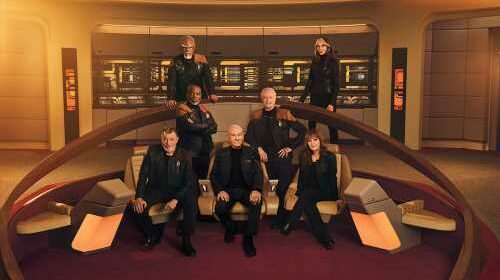The Sound of ‘Ozark,’ ‘Picard’ and ‘Cobra Kai’ Explained by Score Mixer Phil McGowan

As Emmy voting comes to a close, score mixer Phil McGowan could find himself with multiple nominations, having worked on the sound of Paramount+’s “Star Trek: Picard,” Netflix’s “Cobra Kai” and “Ozark,” and Roku’s “Weird: The Al Yankovic Story.”
He spoke with Variety about his approach to each project and what needed to be taken into consideration to preserve the sonic integrity in his mixes.
“Cobra Kai”
“This season was bigger and more maximal than previous seasons, but there wasn’t a big sonic shift. However, each episode is like a movie. Composers Leo Birenberg and Zach Robinson approach it like it’s another ‘Karate Kid’ film. There are guitars, a drum kit, drum machines and lots of percussion. They use a lot of samples that are reminiscent of the 1980s and ’90s. So, I have fun applying mixing techniques with reverb that blends ’80s hair metal and ’90s pop music along with big orchestral symphonic sounds on the show.”
“Weird: The Al Yankovic Story”
“This was a different genre. The score was a big, classic, sweet reverberant Hollywood ’90s orchestra sound, and you rarely get to do that anymore because it’s just not called for these days. Leo and Zach did the score, and they wanted it to sound like a drama from the ’90s, which is what we grew up with. I wanted reverb on this, but they told me to make the orchestra even ‘wetter and go crazy and brighter.’ My favorite moment was when Al and Madonna hook up. They had recorded the piano and with the orchestra at the end, it gets collectively bigger. This took three days because there’s probably only 40 minutes of the score, which is on the low end for a film. Sometimes a movie will have 80-100 minutes. By comparison, “Cobra Kai” took about a day per episode, but toward the end, as the episodes got bigger, it took two days because there was so much music and every single cue had a lot of elements.”
“Star Trek: Picard”
“This was a dream come true because every episode was recorded in L.A. with a 65-piece orchestra. The last episode was shot at Warner Bros. with everyone in the room, and that’s how it used to be, especially when it comes to score mixing for film. Composers Stephen Barton and Frederik Wiedmann created a hybrid score that’s not purely a continuation of what James Horner and Jerry Goldsmith did. There are plenty more cues that have electronic and ’80s rhythms. The inspiration was to bring back the overall tone to the films and ‘Star Trek: The Next Generation,’ as well as references to ‘Deep Space Nine’ and ‘Voyager.’ Since the orchestra sounded so great, I was simply fine-tuning and finessing things and getting in that final polish.”
“Ozark”
“This is the polar opposite. It’s a minimal score, and there was nothing traditional about it. It wasn’t recorded with a full orchestra, and composer Danny Bensi played most of the strings himself. So every cue has a different overdub. It was three tracks of him playing the violin, the cello and a viola. There might even be a bass track. And the sound design team did fun sounds using kitchen utensils for distortion. The challenge was that it was meant to be dark and murky, so in some places, I had to bring in clarity so it blended better with the dialogue and sound effects without losing that sort of murkiness. In this case, it wasn’t meant to be as polished.”
Read More About:
Source: Read Full Article